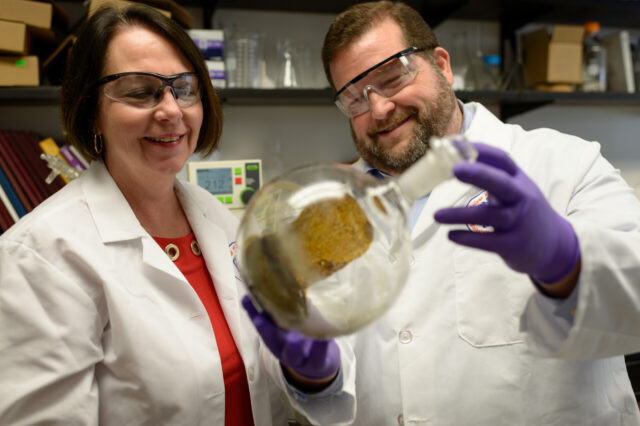NIDA awards UF College of Pharmacy additional $3.4 million kratom grant

Although kratom is seen as a possible remedy for drug addiction, it’s typically associated with harm in western countries but not in those in Southeast Asia where its leaves have been used for hundreds of years. Now the National Institute on Drug Abuse has awarded researchers at the University of Florida College of Pharmacy a multimillion-dollar grant to find out why.
This five-year, $3.4 million grant comes on the heels of another two-year, $3.5 million NIDA grant awarded to the college in December. The first NIDA-funded study examines kratom’s alkaloids individually. This grant evaluates these alkaloids together to study kratom’s effect as a whole.
Researchers at the college have studied kratom, or Mitragyna speciosa, as a potential therapy to wean addicts off heroin or prescription opioids. The plant, which comes from the leaves of a tropical tree from Southeast Asia, has appeared on U.S. regulators’ radar in recent years due to its correlation with abuse in the western world, although Southeast Asians have used kratom for hundreds of years seemingly unharmed.
“We want to find out why we are seeing more harm in the western world when we don’t see it in Southeast Asia,” said the study’s principal investigator, Chris McCurdy, Ph.D., a professor of medicinal chemistry in the college, part of UF Health.
For the first time, UF investigators will be able to compare the effects of kratom in its traditional form — as a tea made from fresh leaves — versus the way westerners consume it — as dried leaves. The team hypothesizes the harm associated with kratom has to do with users commingling it with other drugs, and that dried leaves tend to have higher concentrations of active alkaloidal compounds.
The first NIDA kratom grant funds the identification of each kratom alkaloid and its effects on the brain, as well as metabolism’s effect on the alkaloids. However, individual purified kratom alkaloids do not necessarily affect the brain nor do they break down in the body the same way as all the parts together. The second NIDA grant funds studying the plant’s effect as a whole, essentially what people consume as kratom.
Principal investigators on the study include McCurdy; Lance McMahon, Ph.D., a professor and chair of the department of pharmacodynamics; and the late Bonnie Avery, Ph.D., a clinical professor of pharmaceutics. Avery passed away in March, just one month before the grant was funded. “Bonnie Avery was a critical part of this award, as she would have led the analysis of the alkaloids,” said Maureen Keller-Wood, Ph.D., the college’s associate dean for research and graduate education.
Most researchers only analyze kratom for mitragynine, its most abundant alkaloid, even though it contains more than 40. Avery’s expertise led to the developing of methodology to simultaneously identify and quantify 10 alkaloids. “She was very excited when she heard that NIDA intended to fund her first grant as principal investigator,” Keller-Wood said. “She would be pleased that this work will continue.”